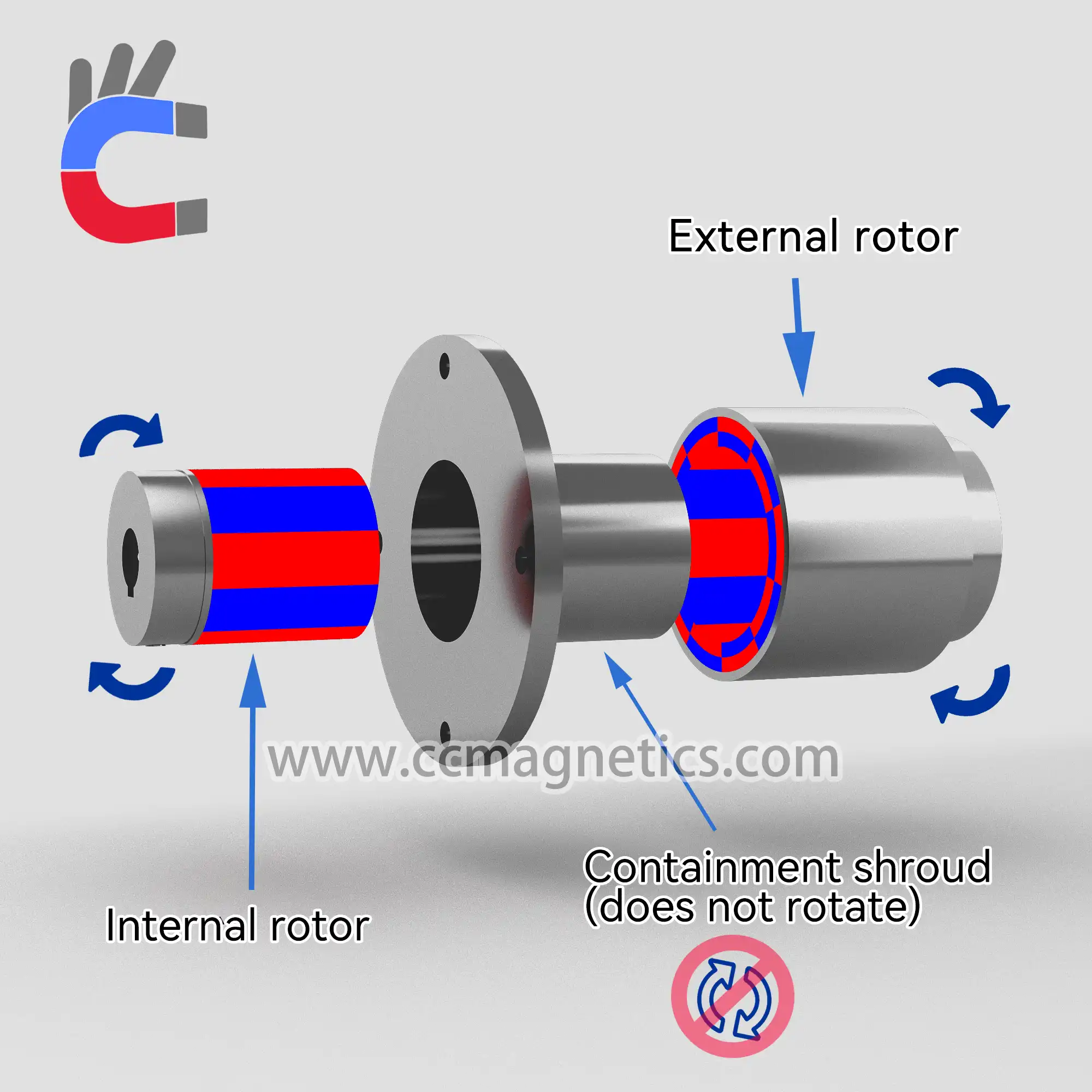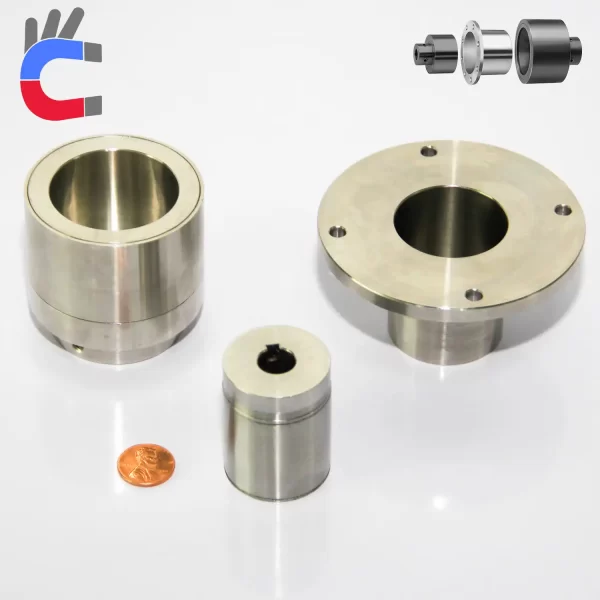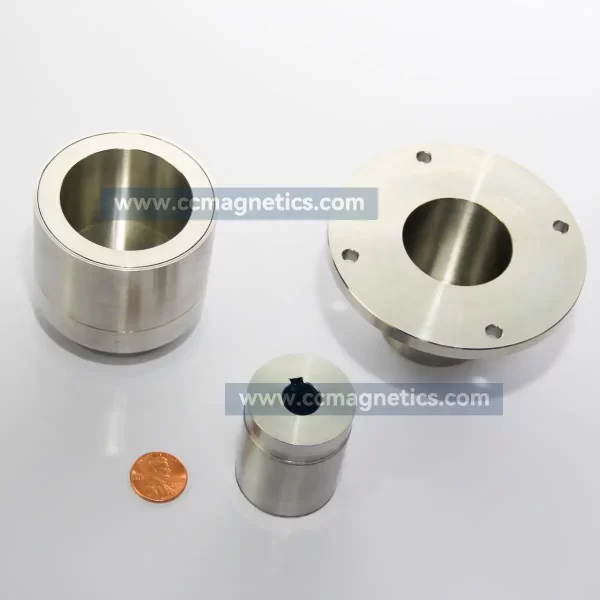Radial Magnetic Couplings, Define Magnetic Coupling,What Is Magnetic Coupling,Magnetic Coupling Working Principle,Magnetic Coupling Torque Calculation,Magnetic Coupling Definition,Magnetic Couplings Gauge,Magnetic Coupling Principle,Gauge Magnetic Couplings
Define co-axial magnetic coupling

Magnetic Couplings have many names, such as: magentic couplers, hysteresis magnetic coupling, co-axail magnetic couplings, magnet linear couplings, synchronous magnetic clutches,co-axail type couplings, but in fact, these names refer to the same thing.
However, please note that magnetic disc coupling is completely different from the above names. Everyone is accustomed to calling it magnetic couplings, and we will call it magnetic couplings below.
Magnetic couplings transmit torque without contact through magnetic forces between the internal and external rotors. They ensure hermetic separation between the driving and driven sides in pumps and agitators, sealing hazardous liquids and gases reliably. Consequently, they prevent serious leakages, operating as a reliable alternative to conventional dynamic shaft seals.
Magnetic couplings operation/design
The coupling consists of an external and an internal rotor. The external rotor features high-quality permanent magnets with varying polarities on its inner side, while the internal rotor has these magnets on its outer side. Typically, the external rotor is fixed on the drive side, with the magnets secured in keyways. In contrast, the magnets on the internal rotor, which is on the driven side, are fully encapsulated.
Co-axial Magnetic couplings torque transmission
In their non-operative states, the north and south poles of the rotors face each other, resulting in a completely symmetrical magnetic field. Torque transmission occurs through the air gap only when the rotors are twisted, allowing for synchronous operation at a constant torsion angle. If the maximum coupling torque and the maximum torsion angle are exceeded, power transmission is interrupted.
Co-axial Magnetic couplings sealing function:
The containment shroud, fixed to the housing, separates the internal and external rotors from each other. It ensures a completely leak-proof separation of the product from the atmosphere. The sealing is achieved statically, for example, with a flat seal or an O-ring, thereby eliminating the need for dynamically loaded sealing elements.
Maybe you need to know: how does a magnetic coupling work?
RELATED PRODUCTS
Magnetic Couplings


